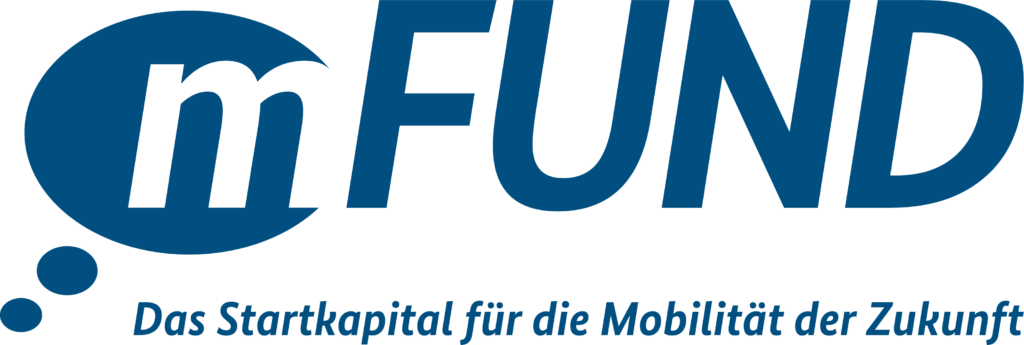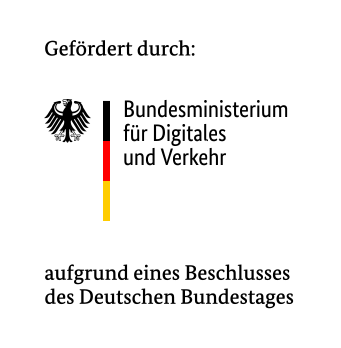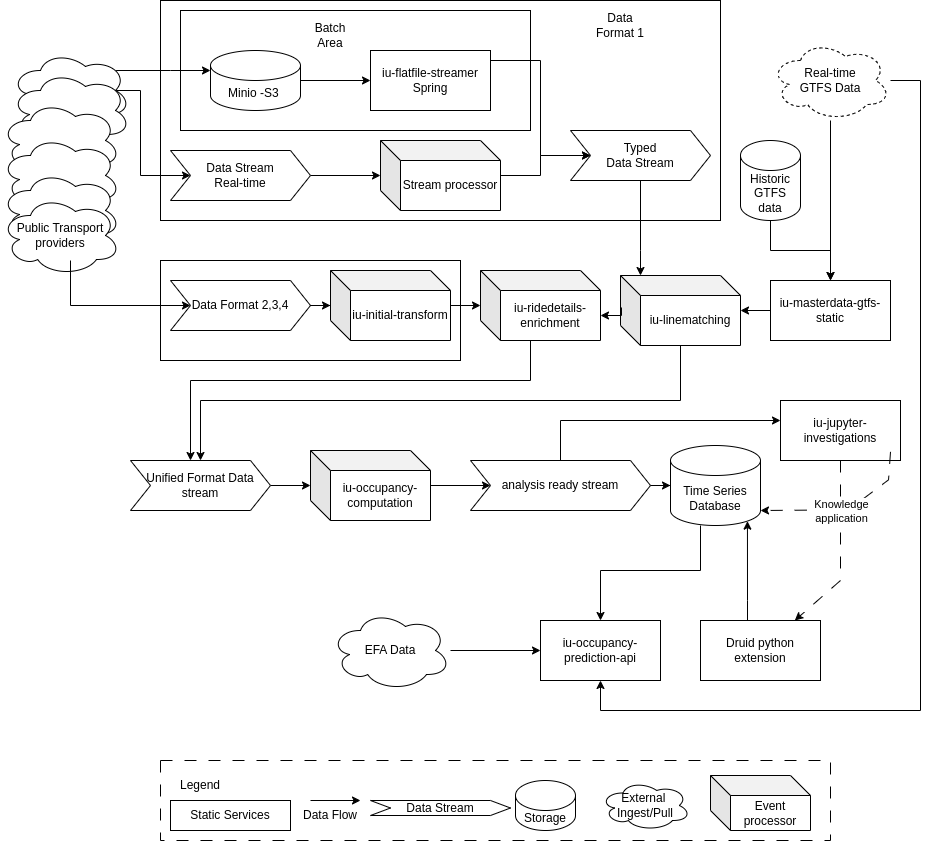Analysis and predictions of occupancy in public transport are essential in order to use vehicles intelligently and in a CO2-optimized manner. External influences such as changes in gasoline prices, ticketing campaigns or seasons make reliable traditional occupancy forecasts impossible. It is particularly difficult to carry out occupancy analyzes in rural areas because local public transport has fewer financial resources. A software innovation with a compatible and open license is therefore required that is particularly applicable, adaptable and expandable for small public transport systems.


Current Situation in Germany
Public transport systems are currently largely insufficiently equipped with people counting devices, data platforms and AI knowledge.
However, the challenge arises that public transport often only carries out detailed occupancy analyzes and forecasts once more people counting systems are installed. However, installing more people counting systems is organizationally difficult without expanded business use cases.
To put it simply, there is a chicken-and-egg problem of increasingly recording occupancy data and creating open source-based, transferable data platforms and thus controlling the transport transition in a data-driven and transparent manner.
In addition, rapid changes in behavior patterns, such as those found in public transport, create challenges in the AI research area. Taken as a whole, the technical starting point of AI shows that the need for adaptive AI learning methods is particularly high, which therefore strengthens AI development.
In terms of data, additional challenges arise. Occupancy data in public transport is generated by occupancy sensors in vehicles. Sensors measure who gets in and out of a vehicle and these then have to be assigned to timetable data. This resulting occupancy data is then validated by passenger counts and is then used by public transport to extrapolate for revenue distribution. The problem is that vehicles are used on different lines and the allocation of vehicles to lines is usually carried out manually by public transport.
Results

All realized artifacts of the project to predict and analyze occupancy data of public transport can be found in Github.
NFT based Software Licensing
In our opinion, the federal structure and the fact that competing proprietary developments are often developed in different public transport systems must be reflected in software licensing. Therefore, at our own expense, regardless of the project, a NFT blockchain-based license was developed that addresses the following issues:
- Open source software development requires a monetary incentive for further development and maintenance. Developers who duplicate a project and, if necessary, other developers must be able to receive compensation based on the share of their further development.
- Authors of open source must be fairly compensated for the use of their source code if third parties further develop it or distribute it. This ensures that developers have an interest in the continued existence of projects.
- The compensation distribution must be blockchain-based because this corresponds to decentralized development and creates transparency and openness.
The “Open Compensation Token License” motivated by the Fahrbar project is the result of these and other requirements. Our ultimate goal of the Open Compensation Token License is to give developers of this and other projects the opportunity to use and further develop open source and to earn a fair license fee for their work contributions.
Essentially the license works as follows:
- Developers register their share of work and their dependencies in the blockchain through non-fungible tokens (NFTs).
- Users of the software obtain an application license for the software artifacts used directly from the blockchain through a smart contract and receive a non-fungible token (NFT) that represents the application license.
- The revenue for the application license is distributed to the developers on a contribution basis.
Conclusion
A main problem in the transport transition is the availability of data and the fragmentation of public transport. Our project shows that it is possible to develop open source public transport software that enables occupancy analysis and occupancy forecasts.
After this project, we believe more than ever that politicians are asked to create a legal framework for public transport through data bases. In practice, such framework conditions mean that far more counting data than today must be unrelated to intended use and available. This would make it possible to create new business models through data and to carry out dogma-free analyzes and inventories.
From a technical and project perspective, we are convinced that our developments and in particular the innovative blockchain-based license can be a way forward for innovations to emerge, especially in the public transport and open source sectors. Because this enables co-innovations and developments in particularly fragmented public transport areas.
